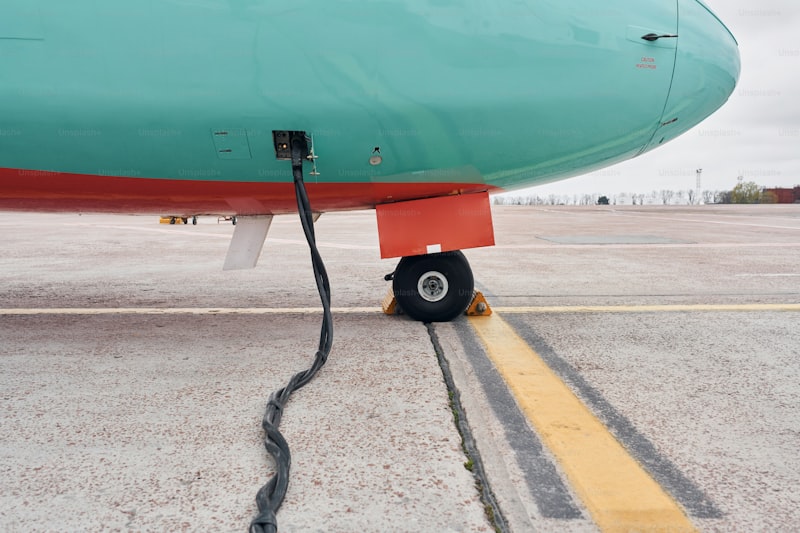Firstly, identifying the leak is crucial. Start by inspecting your exhaust system visually. Look for any visible holes, rust spots, or disconnected pipes. Sometimes, leaks can also occur at the joints or where the exhaust manifold meets the engine. If you notice any damage or gaps, that’s likely where the leak is.
Once you’ve pinpointed the location, you’ll need to gather the right materials before diving into repairs. Depending on the size and location of the leak, you may need exhaust sealant, clamps, or even replacement sections of pipe. It’s essential to ensure you have everything you need beforehand to avoid interruptions during the repair process.
Next, prep your workspace and let your car cool down if it’s been running recently. Working on a cool exhaust system is safer and makes handling the materials easier. Use safety gloves and goggles to protect yourself from any sharp edges or chemicals.
When you’re ready to begin, clean the area around the leak thoroughly. Remove any rust or debris using a wire brush or sandpaper. This step ensures a better seal and improves the effectiveness of the repair.
Apply the exhaust sealant according to the manufacturer’s instructions. Sealants are designed to withstand high temperatures and form a durable seal once cured. For larger leaks or damage, you may need to use a patch or replacement section of pipe. Secure it tightly using clamps or welding, depending on your skill level and the severity of the damage.
After completing the repair, allow the sealant to cure fully before starting your car. This ensures the repair holds and prevents any leaks from reoccurring. Once cured, you can start your car and listen for any signs of leakage. If everything sounds good and there are no visible issues, you’ve successfully fixed your car’s exhaust system leak!
Mastering the Mechanics: Step-by-Step Guide to Repairing Car Exhaust Leaks
Dealing with a car exhaust leak can be daunting, but mastering the mechanics of its repair can save you time and money. Whether you’re a novice or a seasoned DIY enthusiast, understanding the step-by-step process can make all the difference.
Firstly, diagnosing the leak is crucial. Symptoms like loud noises, hissing sounds, or a decrease in fuel efficiency often indicate an exhaust leak. Once identified, the next step is preparation. Gather the necessary tools: safety gloves, jack stands, a flashlight, and most importantly, a repair kit or replacement parts specific to your vehicle’s exhaust system.
Begin by locating the leak. This often requires inspecting the exhaust pipes, joints, and muffler carefully. Remember, safety first – always work on a cool vehicle and use jack stands to elevate it securely.
Next, clean the area around the leak thoroughly. A wire brush or sandpaper can remove rust and debris, ensuring a clean surface for repairs. Depending on the size and location of the leak, you may use a specialized repair paste or sealing tape designed for exhaust systems. Apply these materials carefully, following the manufacturer’s instructions.
After applying the repair solution, allow sufficient curing time as per the product guidelines. Once cured, start the engine and check for any signs of leakage or unusual sounds. If everything seems in order, lower the vehicle and take it for a short test drive to ensure the repair holds under operational conditions.
Remember, mastering the repair process takes practice. Each vehicle may have unique challenges, so patience and attention to detail are key. By following this step-by-step guide, you can tackle car exhaust leaks confidently, keeping your vehicle running smoothly and efficiently.
DIY Auto Care: Essential Tips for Fixing Exhaust Leaks Without a Mechanic
First off, what causes exhaust leaks? These pesky leaks often occur due to corrosion or damage to your exhaust system over time. Common culprits include rusted pipes, loose connections, or even a small hole somewhere along the exhaust system. Detecting them is crucial; you might notice a louder-than-usual engine noise or a hissing sound near the engine bay or under the car.
Before you start fixing, make sure you have the right gear handy. You’ll typically need safety gloves, eye protection, a flashlight, jack stands, and possibly a jack for lifting your vehicle. It’s also smart to have replacement parts like exhaust clamps or gaskets if needed.
Step one: Locate the leak. Start your engine and carefully inspect the exhaust system. Feel for escaping gases with your hands (careful, it’s hot!) or listen for the telltale hiss of a leak. Once found, mark the spot – this will be your focal point.

Next, prep the area around the leak by cleaning it thoroughly. Use a wire brush to remove rust or debris; this ensures a better seal when you make your repair. If the leak is near a joint, tightening the connection might be all you need. For larger holes or cracks, you can use a heat-resistant epoxy or specially designed tape as a temporary fix.
For a more durable solution, consider using a patch kit designed for exhaust repairs. These kits often include a sealing paste or putty that hardens with heat, effectively sealing off leaks. Apply it generously around the leak and let it cure as per the manufacturer’s instructions.
Once the repair is done, start your car again and check for any remaining leaks. Listen carefully for unusual sounds and inspect visually for escaping gases. If everything looks and sounds good, lower your vehicle and take it for a short test drive to ensure the problem is fully resolved.
With these tips, you can confidently address exhaust leaks on your own, saving both time and money. Remember, safety first, and take your time to ensure a proper fix. Happy repairing!
Solutions Under the Hood: Effective Methods to Stop Car Exhaust Leaks
Imagine your car’s exhaust system as a series of interconnected pipes and components, designed to whisk away harmful gases while maintaining optimal engine function. Yet, over time, wear and tear can cause cracks or gaps to form in these components, allowing exhaust gases to escape where they shouldn’t.
One of the most common culprits behind exhaust leaks is a deteriorated gasket. These humble yet vital seals, positioned between exhaust components, can degrade due to heat and pressure. When they do, they fail to maintain a tight seal, resulting in leaks that undermine your engine’s efficiency.
Another stealthy source of leaks lies in the exhaust manifold itself. This component collects exhaust gases from the engine’s cylinders and channels them towards the exhaust pipe. Over years of operation, the manifold can develop cracks or even warp, creating openings for gases to leak out before reaching the catalytic converter.
Enter the hero of our story: the muffler. Not just a hushed guardian of noise reduction, but also a defender against leaks. Mufflers, with their intricate internal baffles and chambers, serve to quieten the roar of engine combustion. However, they also play a crucial role in redirecting exhaust flow and ensuring gases stay contained within the system.
Addressing exhaust leaks requires a methodical approach. First, identify the leak’s location by inspecting the exhaust system for any obvious signs of damage or discoloration caused by escaping gases. Once located, repairs can range from simple fixes like replacing a worn-out gasket or tightening loose bolts, to more complex tasks such as welding cracked components or replacing entire sections of the exhaust.
From Sputters to Silence: Expert Techniques for Quieting Your Car’s Exhaust
One of the primary culprits behind a noisy exhaust is the presence of leaks. These leaks can occur due to worn-out gaskets or cracks in the exhaust system itself. Imagine your car’s exhaust system as a series of interconnected pipes and chambers. Any gap or hole in this network can allow the escape of exhaust gases along with unwanted noise. Addressing these leaks promptly can significantly reduce the racket your car produces.
Another key factor contributing to exhaust noise is the condition of the muffler. Often overlooked but crucial in noise reduction, the muffler acts as a dampener, attenuating the sound waves generated by the engine. Over time, mufflers can degrade or accumulate debris, diminishing their effectiveness. Regular inspection and maintenance, such as cleaning or replacing worn-out mufflers, can restore their ability to silence your car’s exhaust.
Additionally, consider the type of exhaust system your vehicle uses. Some aftermarket exhaust systems are designed specifically for noise reduction, employing advanced materials and configurations to minimize sound emissions without compromising performance. Investing in a high-quality, noise-reducing exhaust system tailored to your vehicle can yield long-term benefits in terms of both comfort and performance.
Ultimately, quieting your car’s exhaust involves a blend of proactive maintenance and informed upgrades. By addressing leaks promptly, maintaining or replacing mufflers as needed, and potentially upgrading to a noise-reducing exhaust system, you can transform your driving experience from a noisy journey to a tranquil ride. Explore these expert techniques to enjoy the peaceful purr of a well-tuned engine on every drive.
Money-Saving Hacks: DIY Fixes for Common Car Exhaust System Leaks
Dealing with a car exhaust system leak can be daunting, but with a few DIY hacks, you can save money and keep your vehicle running smoothly. Exhaust leaks not only affect engine performance but can also lead to increased fuel consumption and environmental concerns. Here’s how you can tackle common exhaust system issues on your own, without breaking the bank.
One of the most frequent culprits behind an exhaust leak is a cracked or corroded pipe. A quick visual inspection under your car can often reveal these issues. Using a specialized exhaust patching kit, you can seal minor cracks effectively. This process involves cleaning the affected area, applying the patching compound, and allowing it to cure as per the manufacturer’s instructions.
Another common issue is a loose or damaged exhaust manifold gasket. This gasket seals the connection between the exhaust manifold and the engine block. Over time, it can wear out, leading to leaks. Replacing this gasket requires basic tools and a new gasket available at auto parts stores. By carefully removing the old gasket, cleaning the surfaces, and installing the new one with proper torque specifications, you can restore the seal and prevent further leaks.
Furthermore, worn-out exhaust hangers can cause the exhaust system to hang low or sway, potentially causing leaks at the connections. Inspecting and replacing these hangers with new ones can often solve this problem. This simple fix can be done with basic hand tools and ensures that your exhaust system stays securely mounted.
Lastly, if you notice excessive noise or smell from the exhaust, it could indicate a leak at the muffler or a damaged catalytic converter. While these repairs may require professional attention, identifying the issue early can save you from costly repairs down the road.
Engine Roaring? Here’s How to Silence Exhaust Leaks in Your Vehicle
To silence these leaks effectively, the first step is to locate them. Inspect the exhaust system visually, checking for any obvious holes, rust spots, or disconnected components. Often, leaks occur near the joints between pipes or where the pipes meet the manifold.
Once identified, repairing the leaks can be approached in several ways. For small holes or gaps, using exhaust tape or sealant designed specifically for high-temperature applications can provide a temporary fix. These products are easy to apply and can withstand the heat generated by the exhaust system.
For more significant leaks or damaged components, replacement might be necessary. This involves replacing the affected section of the exhaust pipe or the gasket that seals the connection between components. It’s essential to use parts that match the specifications of your vehicle to ensure proper fit and function.
Additionally, ensuring that all exhaust system components are securely fastened can help prevent future leaks. Tightening loose bolts or clamps and replacing worn-out hangers can stabilize the exhaust system, reducing the risk of new leaks developing over time.
Regular maintenance and inspections of the exhaust system can also help detect leaks early before they become more severe and noisy. Keeping the system in good condition not only contributes to a quieter ride but also promotes better engine performance and fuel efficiency.
By addressing exhaust leaks promptly and effectively, you can enjoy a smoother, quieter driving experience while extending the life of your vehicle’s exhaust system.
Do-It-Yourself Auto Repair: Easy Steps to Patching Car Exhaust Leaks

Have you ever noticed that odd hissing noise coming from your car’s exhaust? It could be a sign of a pesky exhaust leak. Don’t worry, though – fixing it yourself is totally doable and can save you a bundle in repair costs. Let’s walk through the easy steps to patching car exhaust leaks like a pro.
First things first, identify the leak. Start your engine and listen closely for any unusual sounds or feel around the exhaust system for escaping gases. Once you’ve pinpointed the leak, mark its location with chalk or a marker. Remember, safety first – ensure your car is parked on a flat surface with the handbrake engaged and wear protective gear like gloves and safety goggles.
Next up, prep your materials. You’ll need a quality exhaust repair kit, typically available at your local auto parts store or online. These kits usually contain everything you need, from patches to clamps and even heat-resistant tape. It’s like a DIY superhero in a box!
Now, let’s get hands-on. Start by cleaning the area around the leak thoroughly with a wire brush to remove any rust or debris. This step is crucial for ensuring a strong bond when you apply the patch. Once clean, carefully follow the instructions on your repair kit. Whether you’re using a patch, a clamp, or heat-resistant tape, make sure to apply it securely over the leak.
Finally, after applying the patch, let it cure as per the manufacturer’s instructions. This usually involves running your engine for a specified time to heat up and seal the patch effectively. Once done, give your car a listen – that annoying hiss should be a thing of the past!
Patching a car exhaust leak doesn’t have to be daunting. With the right tools, a bit of elbow grease, and these easy steps, you can get your ride back to running smoothly in no time. Happy repairing!
Frequently Asked Questions
How do you fix an exhaust leak at home
Learn how to fix an exhaust leak at home with our concise guide. Discover step-by-step instructions and essential tools needed to repair exhaust leaks efficiently and effectively.
What are the symptoms of an exhaust system leak
Learn about the symptoms of an exhaust system leak, including loud noises under the car, decreased fuel efficiency, strong exhaust odor inside the vehicle, and visible rust or damage on the exhaust pipes. Promptly addressing these signs can prevent further damage and maintain vehicle performance.
How can I tell if my car has an exhaust leak
Learn how to identify signs of an exhaust leak in your car, such as loud or unusual engine noises, decreased fuel efficiency, visible smoke from the exhaust pipe, or a lingering smell of exhaust fumes inside or around the vehicle.
When should I take my car to a professional for an exhaust leak repair
Learn when it’s necessary to consult a professional for repairing an exhaust leak in your car. Discover clear signs and indications that indicate professional intervention is needed to ensure your vehicle’s exhaust system operates efficiently and safely.
What are the common causes of exhaust system leaks
Discover the typical reasons behind exhaust system leaks, including corrosion, worn-out gaskets, and physical damage. Learn how these issues can affect vehicle performance and safety.


